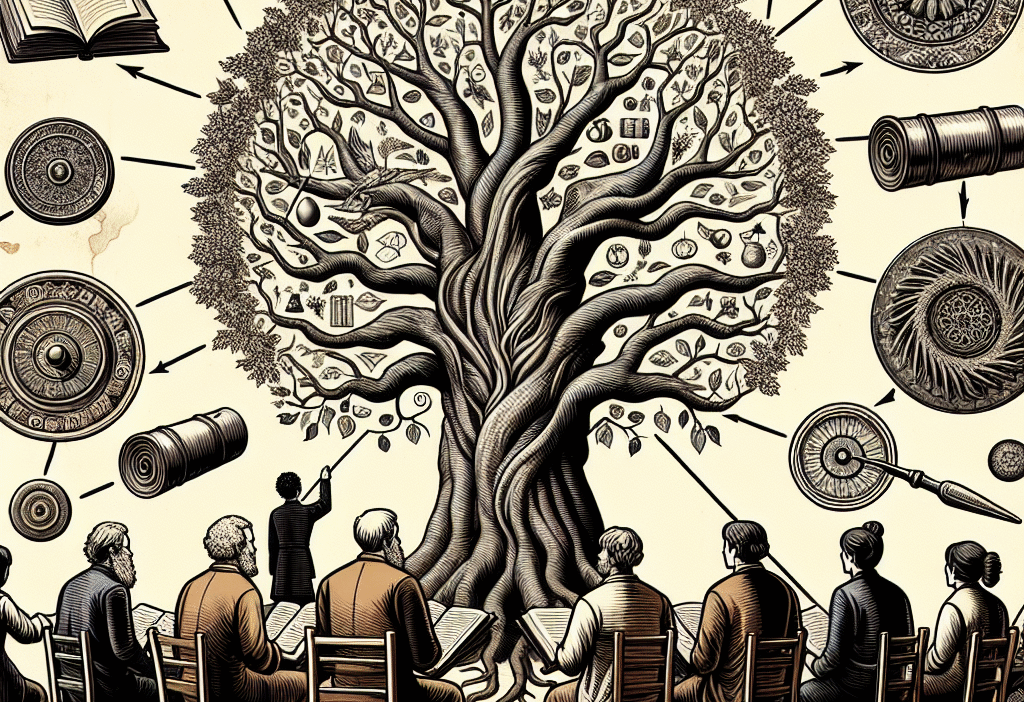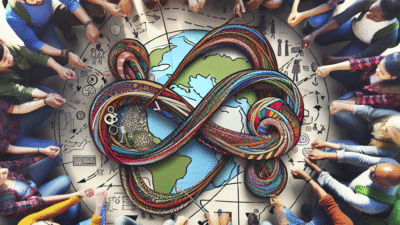Understanding the Caste System: An Anthropological Exploration of Social Hierarchies
Introduction
The caste system is a complex and often controversial social hierarchy that has existed for thousands of years, predominantly in South Asia, particularly in India. 😌 Understanding the caste system is crucial for grasping the intricacies of societal organization and the emotional, social, and political implications that come with it. This article, "Understanding the Caste System: An Anthropological Exploration of Social Hierarchies," dives deep into the anthropological perspectives on caste, dissecting its origins, functions, and modern implications.
By the end of this article, you’ll not only understand the historical and cultural contexts of the caste system but you will also gain insights into its current ramifications, ways to challenge these stigmas, and actionable strategies for fostering social equality. This rich exploration will engage both academic enthusiasts and curious minds alike.
Historical Origins of the Caste System
What is Caste?
The term "caste" derives from the Portuguese word casta, meaning "breed" or "lineage." The caste system categorizes individuals into different social strata—primarily based on birth, profession, and ritual purity. Understanding the caste system begins with the recognition of its framework, consisting of four primary categories, known as varnas:
- Brahmins (priests and scholars)
- Kshatriyas (warriors and rulers)
- Vaishyas (traders and agriculturists)
- Shudras (laborers and service providers)
These categories have evolved over time, leading to an intricate tapestry of sub-castes or jatis, which complicates the structure even further.
Historical Development
The origins of the caste system date back over 3,000 years, finding roots in ancient texts like the Rigveda. Early societies stratified roles based on occupation and division of labor. Over centuries, these distinctions became rigid, perpetuated through religious texts and cultural practices.
| Time Period | Caste Development |
|---|---|
| 1500 BCE | Initial formation of the varna system |
| 500 BCE | Solidification of occupational roles |
| 1000 CE – 1500 CE | Institutionalization reinforced by religion |
Ancient Indian dynasties contributed to the complexity of the system, intertwining it with political power dynamics and local customs. This historic perspective underscores the deeply entrenched nature of the caste system in society.
Anthropological Perspectives on the Caste System
Symbolic Interactionism
Symbolic interactionism views social constructs as products of human interaction. In studying the caste system, this lens allows us to see how daily interactions reinforce caste norms. For instance, language, cultural symbols, and social rituals operate within caste frameworks.
Functionalism
Functionalist theories argue that social structures exist to fulfill essential societal functions. The caste system, in this view, provides stability, ensuring the division of labor and a sense of belonging. While this perspective offers insights into the system’s endurance, it can oversimplify the inherent inequalities.
Conflict Theory
Conversely, conflict theory centers on power dynamics and the struggle over scarce resources. This perspective highlights how caste systems perpetuate inequality, serving the interests of the higher castes at the expense of lower ones. As a result, marginalized communities experience systemic discrimination.
Modern Implications of the Caste System
Contemporary Social Stratifications
Although the Indian constitution abolished "untouchability" in 1950, caste-based divisions remain prevalent in various forms of social, political, and economic discrimination. Awareness and activism have grown, leading to changes in policies to counteract caste-based discrimination, yet societal attitudes often lag behind.
For instance, the Scheduled Castes and Scheduled Tribes are government-recognized categories aimed at uplifting disadvantaged communities, yet the stigmata associated with lower castes persist in various forms of microaggressions and bias.
Education and Economic Mobility
Education is a primary pathway out of the restrictive caste system. Efforts to improve access to quality education for lower-caste individuals have proven effective in increasing economic mobility. However, systemic barriers still exist, reinforcing cycles of poverty and disenfranchisement.
Identity and Self-Perception
Understanding one’s caste can significantly influence identity and self-worth. For many lower-caste individuals, stereotypes and societal discrimination create challenges and internal conflict regarding their self-perception. Activism and awareness are essential for helping individuals reclaim dignity and agency.
Global Perspectives
Interestingly, caste-like systems have found parallels in other societies. For example, racial segregation in the U.S. or class systems in various countries also exhibit forms of hierarchical stratification. Recognizing these parallels can lead to broader discussions of social justice and equality worldwide.
Challenging the Caste System: Actionable Steps
Raising Awareness
Educational initiatives aimed at increasing awareness about caste discrimination can foster empathy and understanding. Community outreach programs, workshops, and academic discussions can serve as platforms for dialogue, helping to challenge deeply entrenched stereotypes.
Supporting Legislation
Supporting policies that address caste-based discrimination is crucial for fostering social change. Advocating for affirmative action in education and employment can provide marginalized communities with essential opportunities.
Embracing Intersectionality
Recognizing the intersection of caste with other social identities—such as gender, race, and class—can help create a more holistic understanding of social inequalities. This nuanced approach enables effective advocacy and policy-making.
Building Inclusive Communities
Creating inclusive environments in workplaces, schools, and communities fosters social cohesion. Encouraging diverse voices and practices while actively dismantling discriminatory behaviors can lead to a more equitable society.
Empowering Lower-Caste Communities
Empowering individuals from lower-caste backgrounds through skills training, entrepreneurship programs, and leadership initiatives can create pathways to socioeconomic development and self-advocacy.
Conclusion
Understanding the caste system is essential to grasp the complexities of social hierarchies, both historical and modern. By examining its origins, implications, and challenges, we can take informed steps toward creating a more equitable society.
While the systemic nature of caste discrimination poses significant barriers, cultivating awareness, advocating for policy changes, and empowering marginalized communities can pave the way toward a more inclusive future. Remember, change begins with understanding, and every effort counts.
FAQs
1. What is the caste system?
The caste system is a social hierarchy prevalent in India and other South Asian countries, categorizing people based on birth, profession, and ritual purity.
2. Is the caste system still relevant today?
Yes, despite legal abolition, the caste system continues to influence social, political, and economic dynamics in modern India.
3. How can we challenge caste discrimination?
Raising awareness, supporting inclusive legislation, empowering marginalized communities, and fostering dialogue can help challenge caste discrimination effectively.
4. What role does education play in dismantling the caste system?
Education can provide avenues for economic mobility and diminish caste-based prejudices, enabled through better access to quality learning opportunities.
5. Are there parallels to the caste system in other cultures?
Yes, various societies exhibit similar hierarchical structures, including racial segregation in the U.S. and class systems in many countries.
Content Enhancements
Here’s a brief overview of the enhanced visual summaries:
Table 1: Historical Development of the Caste System – A timeline showcasing key phases in the evolution of the caste system.
Chart 1: Caste Functions – A functional breakdown of how caste serves various societal needs.
Let’s continue to challenge and transform society for the better, step by step! 🌟



